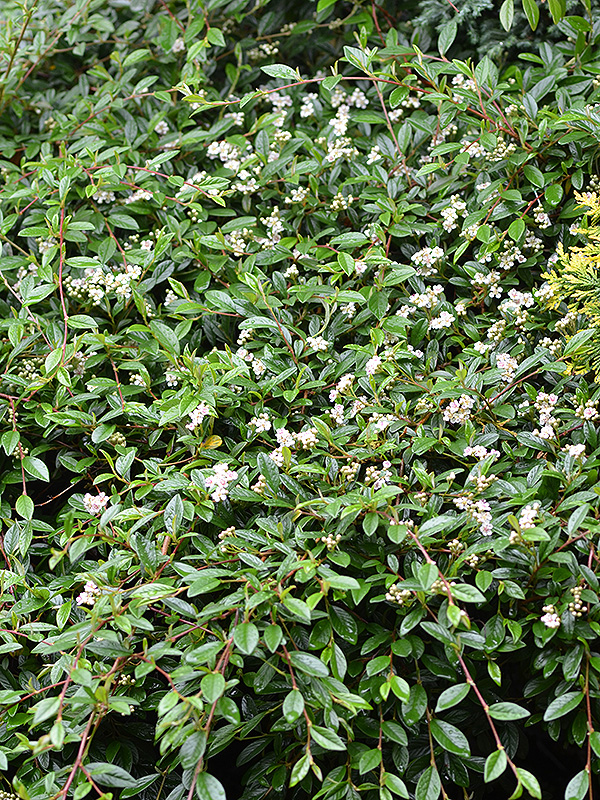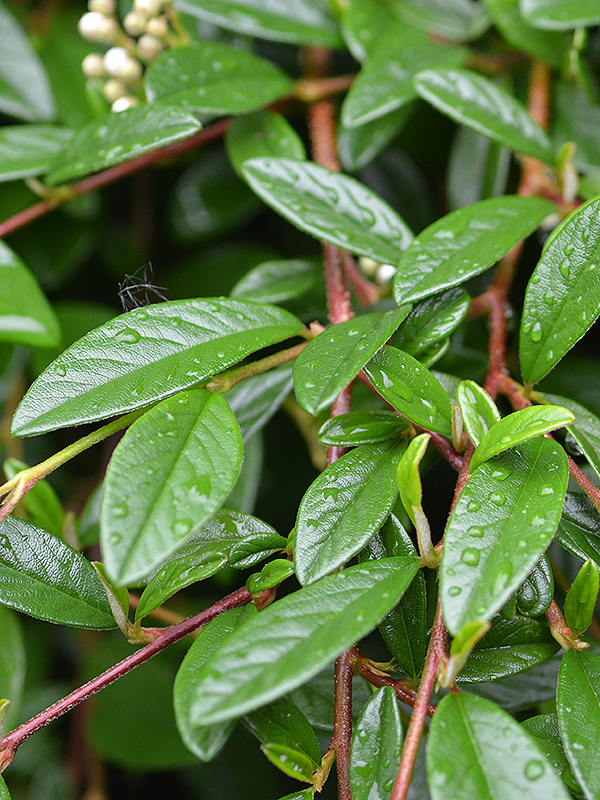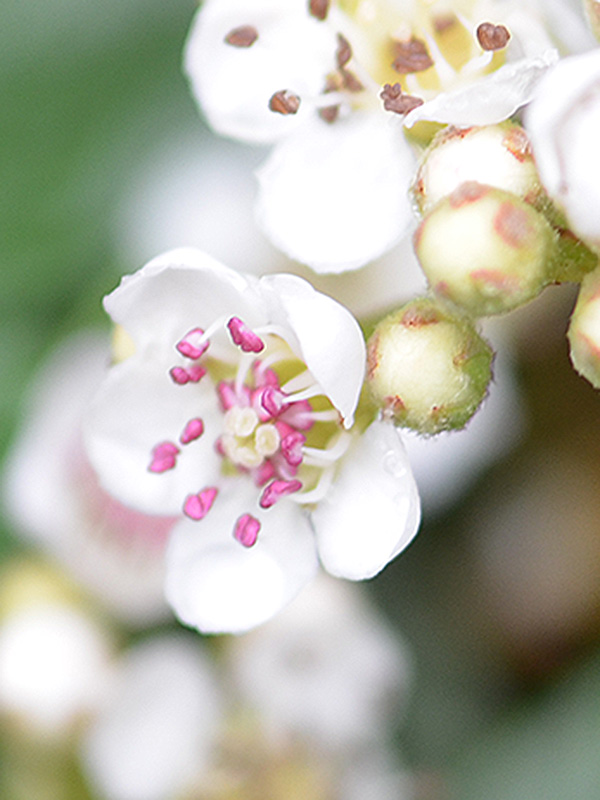| General Description | Large evergreen shrub with a spreading, arching habit. It will become leggy at its base unless pruned. |
| ID Characteristic | Distinctive glossy narrow leaves, wooly white beneath on slender drooping stems. Produces a profusion of small red berries. |
| Shape | Low and spreading. |
| Landscape | Large evergreen shrub valued for its fruit especially in European gardens; perhaps more important as a parent (breeding) in some of the larger fruited ground cover types. |
| Propagation | Best in moist, well-drained, acidic soil and in sun or partial shade. |
| Pests | Chance of fireblight infestations and occasional winter burn. |
| Notable Specimens | Royal Botanical Gardens, Burlington, Ontario, Canada. The Fanshawe College Botanical Gardens, London, Ontario, Canada. |
| Habitat | Found growing in scrub at 2600 - 3000 m. |
| Leaf Description | Leaves are oval-oblong to ovate-lanceolate, 3.5 - 8.5 cm long and are a lustrous dark green, rugose and glabrous above and grey tomentose below. |
| Flower Description | Flowers are individual, small, white, rose like, generally sticky and borne in woolly 5 cm diameter clusters. |
| Fruit Description | Fruit is bright red with 2 - 3 nutlets, which often persist through the winter months. Fruiting in July. |
| Colour Description | Leaves are a lustrous dark green during the growing season, which tend to change to plum purple during the winter months. Flowers are white, while the fruit is bright red. |
| Texture Description | Medium through the seasons. |


